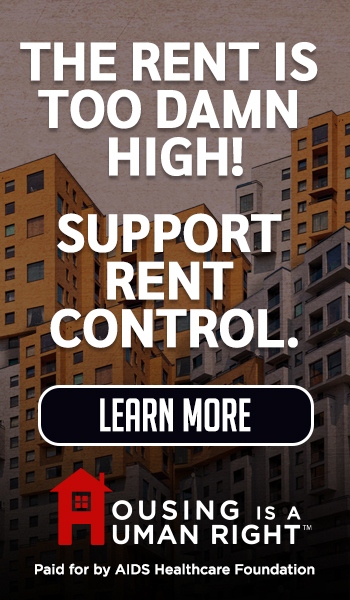Comments
GELFAND’S WORLD - Remember Ports O' Call? It was the old amusement park (set as a south seas landing) situated right along the main shipping channel in San Pedro. You could pick out your own fish and have it fried at the Fish Market, or you could buy candy or a Belgian waffle. There was lots of free parking. What there wasn't were clean bathrooms -- for some reason, the Port of Los Angeles couldn't figure out how to solve this one issue. Still, the place was popular, particularly on the weekends.
But the Port and a few local movers-and-shakers wanted something new and different, so they had the place torn down. There was a little bit of movement on new construction, but the Covid epidemic slowed things down. Way down. Now, the new place is almost completely built. It consists at the moment of several new, metal sided buildings that look like nothing so much as warehouses that have been upgraded as public service amenities. We who live near the harbor have been waiting for the grand opening.
But then there was the surprise.
But to properly introduce this topic, let's go back to the original plan.
The design that was OK'd -- including the environmental impact study -- included a 500 seat entertainment venue. It would have allowed for concerts and plays -- all that sort of thing. It was fairly inconsequential in terms of its potential effect on the local community. We already had that many people and more on any given Sunday when the old Ports O' Call was in existence.
But then the city and the developers dropped the bombshell on us. They changed their minds on the 500 seat entertainment center. In its place they substituted a 6200 seat amphitheater. You can get a feel for the size by recognizing that this would be more than one-third the size of the Hollywood Bowl. It would hold more seats than the Greek Theater.
It will be huge compared to most concert venues in the area, and it comes with built-in problems for the community. The main issues are traffic and noise.
One other point before we get into the details. The proposed amphitheater is on Port of L.A. land, which means that it is under the purview of the Board of Harbor Commissioners. (aka the Harbor Commission). The commissioners are appointed by the mayor and confirmed by the City Council. The addition of the 6200 seat amphitheater required that the Port create and approve a supplemental environmental impact study (an SEIR).
The mayor and the City Council are supposed to protect the community from outrageous design errors. Let's consider whether they have done so.
The residential areas surrounding the main channel are on a hillside that looks down on and across the port. It's a little like the Bay of Naples in that it forms a natural bowl. San Pedro residents used to complain about noises coming from Pier 400, which is way across the bay. That's because of the way the sound funnels to the houses and apartment buildings along the hillside. The Port eventually agreed to some compromises and now the noise is mostly under control. But the acoustic properties of living in a natural amphitheater the size of San Pedro Bay continue.
There still are problems. Once in a while the Port will allow a car race on the outer harbor cruise terminal, which lies directly opposite the residential areas. At other times, the Port allows a rock concert in the same place. These events are permitted without prior consultation with the neighborhood council, even though the council has requested such discussions.
In brief, the Port makes clear that it doesn't give a damn about the concerns of the people who live alongside it.
So what did the Harbor Commission do about the proposed 6200 seat theater?
Briefly stated, it did about the minimum that the law requires, and nothing more. In the process that goes into an environmental impact study, people and outside organizations are allowed to state their questions, concerns, and objections. The Coastal San Pedro Neighborhood Council, which is elected to represent the interests of approximately 25,000 residents, raised concerns over traffic, noise, and effects on the environment. Let's talk first about traffic:
There aren't a lot of ways into or out of San Pedro. The Harbor Freeway (the 110) ends as San Pedro begins, feeding into Gaffey Street. There is also a narrow off-ramp that feeds traffic to Harbor Blvd, which runs along the main shipping channel. There is one more street, Pacific Ave, running between Gaffey and Harbor.
So Manhattan Island this isn't. West L.A. it's not. There just aren't a lot of ways to get through San Pedro on an ordinary day. Now try adding a couple of thousand cars -- all trying to get to the amphitheater for the start of the show -- and imagine how a thousand cars will move ever so slowly as they attempt a left turn at the streetlight at 22nd and Pacific. We can imagine that the authorities will hope to funnel traffic along Harbor, but this is likely to create a traffic jam at the end of the 110.
If this were something that would only happen on the Fourth of July and New Year's Eve, then we could live with it. But the environmental study allows for 100 shows a year! We can expect most of them to be scheduled on weekend nights, which implies that almost every weekend will be a traffic nightmare for the residents. Even if this supposition is not completely accurate, scheduling concerts on weeknights would result in equal difficulties, if not worse.
The Port has created its own connectivity plan -- aimed at easing traffic -- which I find to be little more than window dressing.
And then there is the noise issue, which is the main problem.
We can imagine that the new venue will bring in rock bands. They don't exactly make this a secret, and the Port division that prepared the Supplemental EIR took this into consideration. In response to a suggestion, the Port has agreed to limits of 100 dB sound intensity, although this is only an average value taken over 5 minute intervals. In other words, a band could bang away and throb loudly, and the peaks will be averaged with the intervals, allowing for a painful effect which, however, manages to fulfill the average. At least that's how I read the determination wording.
There is a bit more. That 100 dB average is to be measured at the sound board in the venue, and the venue itself is supposed to have some sound absorbing materials around it. But I find this unconvincing. A venue which is large enough to hold 6200 people is going to be broad and wide, and sound will find its way out of the theater, up the hillsides, and right into our homes.
And, to repeat, it's now permitted to happen 100 times a year.
Oh yeah -- there are the fireworks shows. San Pedro has traditionally hosted a Fourth of July show (for some reason to be on the 5th this year) but that's it. We do suffer from some illegal fireworks along the shore, but that is not the same as a professional show. The SEIR is now written to limit such displays to 13 per year, and only 2 of them can be as long as 20 minutes. There is also a prohibition against the kinds of fireworks that sound like dynamite explosions, so there is that.
Just for sanity's sake, let's consider what could and might have been, had city government actually listened to the people who live here.
There was no objection that I'm aware of to the original plan for a 500 seat theater. Most of us probably assumed that it would be a building and would contain any loud noises. (Maybe I was wrong about that.) But the replacement plan, with its 6200 seats, came late in the process. Had the amphitheater been a part of the original idea, there would have been organized opposition, and the amphitheater would likely have been dropped from the plans. Instead, it came in this stealthy way.
The Port division that wrote the recommendation to the Harbor Commission makes note of the fact that the majority of comments on the plan were positive, although a significant fraction were negative. This remark fails to take into account the fact that the neighborhood council is an elected body representing tens of thousands of residents, and that the council voted strongly in favor of its motion which indicated a large number of concerns. The discussions and legislative history of the neighborhood council motion made this clear.
The vote by the Harbor Commission to accept the SEIR and thereby allow for the construction of the amphitheater was political in the most direct sense. It chose the interests of the developers and, to a certain extent, to some broadly conceived idea of support for the tourist industry, all without considering the comfort or property values in the surrounding community. It is another faux pas on the part of the mayor. She should strongly consider replacing the members of the Harbor Commission or at least invite a motion to reconsider the previous vote.
Of course, if enough local property owners felt concerned over what a public boom box will do to their own peaceful existence and the sales value of their homes, they can file a lawsuit which would tie this project up in the courts for years to come. And they should.
(Bob Gelfand writes on science, culture, and politics for CityWatch. He can be reached at [email protected])






